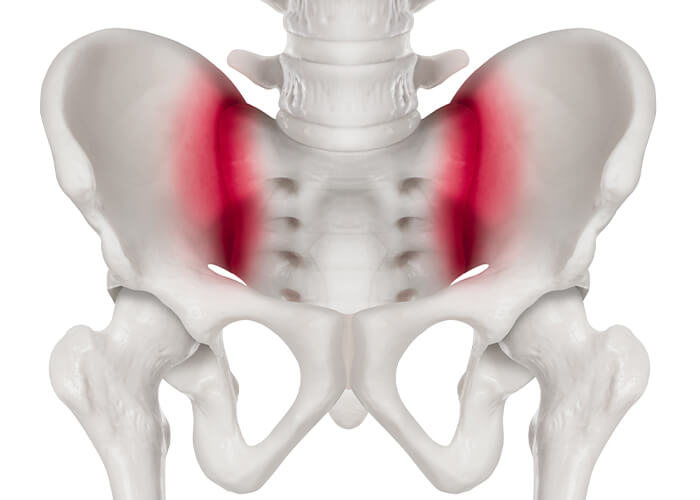
Among 1 in 5 women experience pelvic pain during some stages of pregnancy due to hormonal and physiological changes in the body.
As the body continues to make changes to make room for the growing baby and for the baby to pass through the pelvis during labour, women experience discomfort, pain or cramps in the pelvic region. This type of pain is is now collectively called pregnancy-related pelvic girdle pain (PGP).
What Does Pelvic Pain in Pregnancy Feel Like?
Though PGP can occur due to hormonal changes and other obstetric disorders, it occurs mainly due to the pressure on the pelvic joints. The pain is usually felt in the lower part of the abdomen, between the belly button and the groin.
PGP describes the pain in the pelvic joints that make the pelvic girdle. The pelvic girdle is a ring-like structure located at the lower part of the torso. It consists of the two sacroiliac joints at the back and one pubic symphysis joint at the front. Any changes or stiffness in these pelvic joints causes dull, period-like cramps or persisting sharp pain in the lower back or pubic region
Without adequate treatment and care, some women can suffer from these symptoms even after birth. Therefore, an early diagnosis and treatment is important to treat and prevent the pain from coming back. Most PGP associated with changes in the biomechanics of the pelvic girdle can be treated with good chiropractic care.
Regular Osteopathic treatment with an experienced Osteopath throughout your pregnancy will help ease the pelvic pain during pregnancy. It will also help prevent the pain from coming back after you give birth especially if there is a misalignment issue.
Causes of Pelvic Pain During Pregnancy
Pain in the pelvic area during pregnancy is caused by various factors. However, if you experience pelvic pain with other symptoms like bleeding or fever, you need immediate medical care and attention. The most common causes of pelvic pain during pregnancy are:

- Symphysis pubis dysfunction (SPD): An increase in hormone levels such as oestrogen, progesterone and relaxin. These hormones relax the pelvic ligaments surrounding the symphysis pubis joint. As a result, the joint becomes more mobile and unstable, causing pain in the pelvic area.
- Diastasis symphysis pubis (DSP): This condition occurs when the gap in the symphysis pubis joint widens more than 2 to 3 millimetres, making it unstable and painful.
- Sacroiliac joint pain: When the ligaments in the sacroiliac joints relax too much, it may cause the sacroiliac joint to move or even become unstable. This may strain the nerves and muscles in the region, causing pain in the pelvic region.

- Growth spurts of the fetus and uterus: This is the accommodation pain from the expanding uterus and growing fetus that women experience typically from the 8th to 12th week of the pregnancy.
- Pressure from the weight of the growing baby: As the baby starts growing rapidly in the third trimester, it starts pressing down the nerves that run from the pubic region to the legs, causing pelvic pain.
- Diastasis Recti: It is the condition in which the rectus abdominis muscles that meet at the midline of the stomach separate, causing pelvic pain especially as the womb expands during pregnancy.
- Round ligament pain: As the uterus (womb) starts growing, the two round ligaments which attach the uterus to the pelvis stretch, causing pain.
- Braxton Hicks contraction: These are false labour pains causing pain, pressure or tightening in the pelvis area.
- Ovarian cysts: When the growing uterus adds pressure to the ovarian cysts or when they rupture during pregnancy, it causes excruciating pain in the pelvis.
- Urinary tract infection: Many pregnant women experience pelvic pain as a symptom of UTI, along with other UTI symptoms. It is therefore important to exclude this with a simple urine test in pregnancy
Other Obstetric Disorders
In addition to the above causes, other severe obstetric complications that cause pelvic pain are:
- Miscarriage
- Ectopic pregnancy
- Preterm labour
- Preeclampsia
- Placental abruption
- Kidney stones
- Appendicitis
- Uterine rupture
- Uterine fibroids
- Ovarian torsion
Symptoms of Pelvic Pain During Pregnancy

Pregnant women with PGP typically experience mild or intense pain over the pubic bone at the front, below the stomach and across one or both sides of the lower back. Sometimes the pain also radiates down the leg. They can also experience pain in the anal region. Some of the symptoms are:
- Difficulty walking or standing
- Pain while moving your legs apart while getting in and out of the car or bed
- Clicking or a grinding sensation in the pelvic area
- Difficulty lifting legs while climbing up and down the stairs
- Pain or difficulty turning over in bed
- Radiating pain in the thighs
- Pain while lying on your back
- Limited or painful hip movements while doing normal activities
Diagnosis of Pelvic Pain During Pregnancy
PGP is different from regular abdominal pain, and hence your doctor or midwife will need to perform a thorough assessment starting from your medical history to a careful examination of the pelvic region.
The physical examination should include an assessment of your pelvis, back and hip to accurately identify the pain generator.
They may also ask for blood tests, urinalysis and imaging tests if necessary. Based on the cause and severity of symptoms, they may provide a referral to a chiropractor or physiotherapist that specialise in obstetric pelvic joint treatment.
Treatments to Relieve Pelvic Pain During Pregnancy
Depending upon the cause and symptoms of the pelvic pain, your doctor may suggest any of the following treatments to help ease the pain. They may also recommend using pregnancy pillows, crutches or belts to provide more support and stability.
Analgesics
Your doctor may provide over-the-counter pain relievers like paracetamol that are safe during pregnancy to ease pelvic pain.
Osteopathic Care
Osteopathic is the safest and most effective treatment for relieving pelvic pain during pregnancy from symphysis pubic dysfunction and the diastasis symphysis pubis.
A Osteopath will often carefully perform a Osteopathic and orthopaedic examination of the pubic symphysis and sacroiliac joints to diagnose the cause of the pelvic pain. They may prepare a treatment plan to make sure the joints are in alignment and regain stability.
Some of the Osteopathic care techniques and treatment for women with PGP are:
- Soft tissue techniques such as gentle mobilisation
- Exercises
- Ligament or muscle release
- Supporting pelvic muscles with stability belt
Physiotherapy
Physiotherapy is another effective treatment that relieves pelvic pain and strengthens the pelvic muscles. A physiotherapist may use several techniques, including manual techniques, exercise, exercise in water, TENS and acupuncture— to reduce pain and improve stability. They may also suggest postural positions for labour and birth to reduce the strain on the pelvic region.
Final Thoughts
Pelvic pain is common in pregnancy, and it affects women at any stage of pregnancy. However, some women are at a higher risk of developing pelvic pain during pregnancy.
These women may have a history of lower back pain or pelvic pain, an injury in the pelvic region, PGP from the previous pregnancy or multiple-birth pregnancy. If you have any of these conditions, you must pay attention to pelvic pain as it can become chronic.
Contact us now if you are looking for a good Osteopath in Manchester to care for your pelvic pain
FAQ’s
What is symphysis pubis dysfunction (SPD)? Is it serious?
The pubic symphysis is a s joint where both sides of the pelvis meet in the pubic region. When you are pregnant, the ligaments around this joint relax. When they relax too much, the pubic symphysis joint becomes unbalanced, causing mild to excruciating pain. This condition is called symphysis pubis dysfunction and thankfully is not serious. The pain can at times be excruciating though and if this occurs do consult a Doctor or Osteopath at MyMSK Clinic. We have the treatment option of a mild dose of cortisone to provide pain relief. On an important side note, if you experience burning pain when you pee, vaginal bleeding or fever, you must consult your doctor immediately.
Does Osteopathic help with pelvic girdle pain during pregnancy?
Osteopathic is an effective treatment for relieving PGP from pelvis misalignment. A Osteopath uses safe manual techniques such as mobilisations, soft tissue techniques and spinal manipulative therapy and exercises. Moreover, Osteopathic techniques aim to address and treat the cause of the problem rather than just treating the symptom. This is to prevent recurring pelvic pain.
Is pelvic pain is normal in pregnancy?
Many women experience pelvic pain and discomfort at some stage of pregnancy. It can be a tolerable pain or sharp shooting pain. However, if it keeps returning, affecting your daily activities, you must get immediate medical help. Also, if you spot vaginal bleeding or fluid discharge or have any other symptoms like fever, chills and light-headedness, you must contact your doctor or midwife immediately.
When does pelvic pain start in pregnancy?
Pelvic pain usually starts from the 20th week of pregnancy though it can start from the earlier stages as well. The pain usually feels like period cramps or sudden sharp pain to dull aching pain. The pain can also be constant or recurring depending upon the cause. Sometimes the pain can also radiate through your thighs and legs.
Is it normal for your pelvis to hurt during early pregnancy?
Many women experience pelvic pain during the very early stages of pregnancy. Though it’s normal as the bones and ligaments move to adjust to the expanding womb, it can indicate something serious if you have vaginal bleeding, fever or chills. Also, if the pain keeps coming back and affects your daily activities, you should get an assessment and treatment to avoid long term discomfort and a smoother passage through pregnancy.
